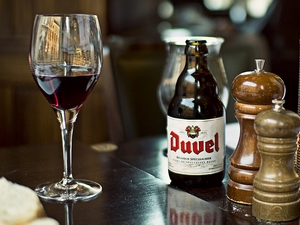 allup's annual Consumption Habits Poll, U.S. consumers who drink alcohol are about equally likely to say they drink beer (36 percent) or wine (35 percent) most often. Another 23 percent say liquor is their beverage of choice. That continues the trend in which beer has declined as the preferred beverage of U.S. drinkers, shrinking its advantage over wine from 20 percentage points in 1992 to just one point today.
allup's annual Consumption Habits Poll, U.S. consumers who drink alcohol are about equally likely to say they drink beer (36 percent) or wine (35 percent) most often. Another 23 percent say liquor is their beverage of choice. That continues the trend in which beer has declined as the preferred beverage of U.S. drinkers, shrinking its advantage over wine from 20 percentage points in 1992 to just one point today.The narrowing of the gap is most notable among younger adult consumers. In the early 1990s, 71 percent of adults under age 30 said they drank beer most often. That figure now stands at 41 percent. There has been a much smaller decline in the percentage of 30- to 49-year-olds who say they drink beer the most, from 48 percent to 43 percent, with essentially no change in older drinkers' beer preference, according to the poll results.
Younger adults' preferences have shifted toward both liquor and wine, but more so toward liquor, over the past two decades. Those between the ages of 30 and 49 have moved exclusively toward liquor. Older Americans now increasingly say they drink wine most and are less likely to say they drink liquor most.
Despite these shifts, beer still remains the preferred beverage of 18- to 49-year-olds, while wine continues to rank as the top choice of those aged 50 and older.
In addition to changes in the younger demographic, the Gallup poll found changes by ethnicity as well. Since the early 1990s, both Whites and non-Whites have become less likely to choose beer as their favorite alcoholic drink. However, non-Whites have shown a greater shift than Whites, down 19 points and 9 points, respectively.
Both racial groups' preferences for wine have increased, with smaller gains in both groups' preferences for liquor, according to Gallup.





